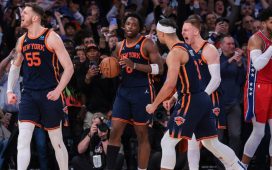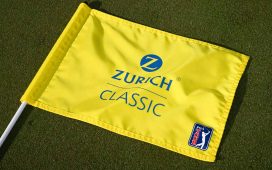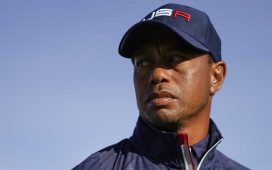We learned a great deal from “The Match II” that pitted Tiger Woods and Peyton Manning against Phil Mickelson and Tom Brady: that golf can raise enormous sums for COVID19 relief, rendering all other analysis of the exhibition inconsequential by comparison; that Mickelson is a consummate public performer; that Woods’ body and game show no signs of stress; and that a superior golf course—as Seminole is versus Medalist—doesn’t guarantee a better affair.
What we didn’t learn is a brave new template for broadcasting tournament golf to the masses. That position—well-trafficked on social media—is, in the argot of Ian Poulter, a little previous.
“The Match II” was well-executed and much more entertaining than the typical celebrity intrusions to golf. By comparison, the previous week’s charity affair at Seminole featured four PGA Tour players — one of them a walking shrug, another apparently limited to whatever spark is scripted for his continuous commercials — and a course that flummoxed all of them. But to conclude that “The Match II” is a blueprint for how golf should be broadcast is like using a celebrity dunk contest as a guide for how the NBA should air games. It also ignores inconvenient logistics and economics.
Some aspects of “The Match II” aren’t relevant to a broader discussion on televised golf going forward. Firstly, the ratings. Impressive as they were, the show was an oasis in the desert for sports fans and included two icons from the most popular sport in the land. Top drawer ratings are to be expected in a one-drawer world. Ignore, too, the cameras in carts. That’s only germane if you want to see PGA Tour Champions players grimace about their bum hips as they cruise down the fairway. (One exception: who wouldn’t want a live look at Slugger White as he commutes to and from Patrick Reed’s next gentlemanly misunderstanding?)
The most compelling possibility raised by “The Match II” is having players wear microphones during tournament play, and this week the European Tour said it will encourage players to be mic’d when it resumes action in July. The ET’s chief executive, Keith Pelley, exhibits more confidence in golfers agreeing to this than any of the people I know who produce live tournament golf for a living. Those producers will unanimously tell you it’s near impossible to get a simple walk and talk from a PGA Tour player, much less an intimate audio feed for 18 holes of competition.
The absence of mic’d competitors in tournaments isn’t because producers don’t want greater access. For all their garrulousness on social media, even younger Tour players maintain an old school mentality passed down from generations of Curtis Stranges and Raymond Floyds, who were as about as approachable as a piranha with toothache when they were working between the ropes. There is also a cost attached. “The Match II” was carefully stage-managed, with players held up along the way to ensure they were live at the right times. That won’t happen in tournaments with 156 guys in the field. Sure, you can stream a single group wired for sound, but for network broadcasts you’ll add the expense of a production staffer to monitor all the chatter for gems and a tape operator to cue it up (and armchair critics will still bemoan that it’s tape-delayed).
Such costs are relatively small, but tell that to those held hostage to budgets. In return for player audio, a camera here or there might have to be sacrificed. And what is shunted aside to make way for this intimate new content? Live shots of actual play? Network commercials that pay for the rights fee? PGA Tour promos? Pedestrian interviews with check-signing CEOs sponsoring matters? Many of these elements chafe viewers — with good reason — but they hint at the many constituencies who would need to align to make this happen.
And the odds of that are slender. One of them in support is, well, one. One of them out is all out.
There is a fertile discussion to be had on how best to elevate golf on television. Viewers are served too much stale fare in tournament formats, in on-air voices, in production values, in course setups. There is blame to go around for this, but not yet enough evidence of a stomach for significant change among the powers that be. “The Match II” wasn’t so innovative as to offer an obvious, easy solution. But it was plenty good enough to remind us there’s a problem.








